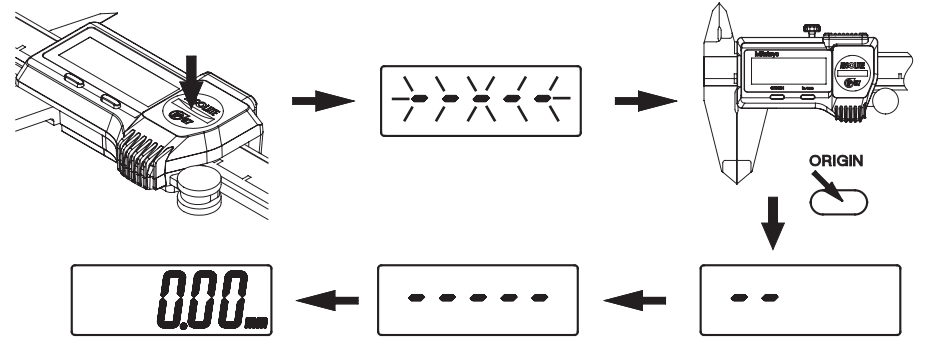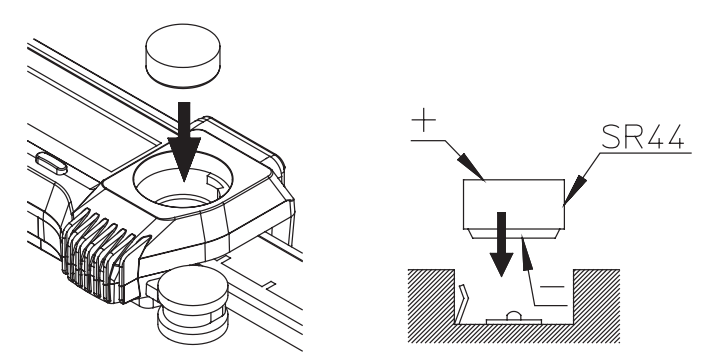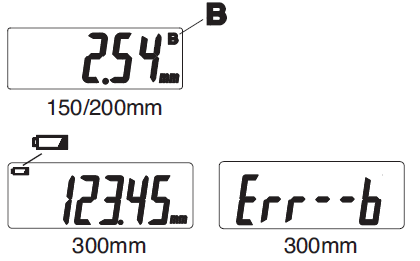Measuring Instrument Batteries:FAQ
What is a button cell battery?

Button cell batteries, due to their small size, find widespread applications in various microelectronic products. Common types of button cell batteries include carbon-zinc, alkaline, zinc-silver oxide, lithium-manganese dioxide, nickel-cadmium rechargeable button cell batteries, nickel-metal hydride rechargeable button cell batteries, and so on. Meanwhile, digital measuring instruments commonly utilize alkaline (LR) batteries and silver oxide (SR) batteries.
LR44 batteries are cheaper and more readily available than SR44 batteries. Can LR44 batteries be used instead of SR batteries?
The LR44 and SR44 batteries are widely employed as button/coin cell power sources, each exhibiting distinct qualities and uses. LR44, alternatively termed the IR44 battery, utilizes Alkaline Zinc Manganese chemistry, presenting a budget-friendly and adaptable option for numerous electronic devices. Conversely, the SR44 battery, featuring Silver Oxide chemistry, distinguishes itself with consistent voltage output and is commonly favored in precision instruments such as watches and calculators. Despite variances in chemistry, these batteries boast comparable dimensions and are often interchangeable across a range of devices.
LR44 VS SR44: Price
Alkaline LR batteries are cheaper than silver oxide batteries. However, in terms of expected lifespan, silver oxide batteries outperform alkaline batteries.
LR44 VS SR44: Longer Lifespan
Despite being more expensive, silver oxide batteries are superior to alkaline batteries in terms of lifespan. Silver oxide batteries have a longer shelf life compared to alkaline batteries. For example, silver oxide batteries can easily provide service for up to five years, whereas the shelf life of alkaline batteries is two to five years.
LR44 VS SR44: Usage
When using batteries for general-purpose applications such as toys, LR44 is the better choice. However, for critical applications and devices (such as medical equipment and similar applications), SR44 batteries are preferred.
LR44 VS SR44: Voltage
Furthermore, silver oxide batteries have a slightly higher voltage than alkaline batteries. Additionally, they have higher cutoff voltages. On the other hand, SR44 batteries have a more stable output voltage and higher capacity compared to LR44 batteries. For this reason, SR44 batteries must be chosen.
LR44 VS SR44: Equivalents
LR44:
Equivalent products to LR44 batteries are also known as A76, AG13, L1154, LR1154, and 157. These sizes can replace LR44 batteries.
There are other batteries similar to LR44 batteries, but with different chemical compositions. LR44 batteries share the same size as silver oxide button batteries such as SR44, SR44SW, 303, and 357, but with different chemical compositions.
Although batteries can be installed interchangeably in each other's devices quite easily, it is essential to select the recommended battery type for your device to avoid overdischarge/undervoltage. Be sure to carefully check the size and voltage requirements of the required battery to avoid any potential damage to your device.
SR Battery vs LR Battery
Alkaline button cell batteries (LR batteries) are small primary batteries with a relatively inexpensive manganese dioxide cathode and a zinc anode, with an alkaline electrolyte solution. Compared to SR batteries, LR batteries are cheaper.
Silver oxide batteries (SR batteries) are small primary batteries with a silver oxide cathode, a zinc anode, and an alkaline electrolyte solution. They offer advantages such as higher capacity and more stable voltage, with superior long-term stability.
Usage Tip:
LR44 batteries are low-load batteries with a relatively short lifespan, leading to higher overall costs. They may also cause display anomalies and are not suitable for use in digital measuring instruments. Considering lifespan and performance stability, it's recommended to use SR44 batteries instead!
After installing the battery in the new Mitutoyo digital caliper, if the display screen shows "-----," does it mean there's a malfunction?
When installing the battery in the digital caliper, it's normal for the display screen to show "-----" as depicted below. This isn't a malfunction; it indicates that you need to set the ORIGIN (zero point).
Press and hold the ORIGIN button for 1 second or longer using a thin object like the tip of a ballpoint pen or a toothpick until the screen displays the number "0.00," indicating that the zero point has been set.

Please note:
- Press and hold the button gently until the screen displays zero before releasing.
- Avoid using sharp-pointed objects, as they may damage the button.
After installing or replacing the battery in the digital indicator, if the last digit on the display screen shows "E," does it mean there's a malfunction?
After installing the battery in the digital indicator, it's possible for the last digit on the display screen to show either meaningless characters or "E" as illustrated in the right diagram below. However, this isn't a malfunction; it may indicate that the ORIGIN hasn't been set yet.

Solution:
You can refer to the second point in the previous section to set the ORIGIN. Once the ORIGIN is set, the "E" display should disappear.
After replacing the battery in the digital measuring instrument, if the LCD display screen doesn't show anything, does it mean there's a malfunction?
Encountering such a situation, to determine if there's a malfunction, consider the following two possibilities:
1. Is the battery dead or installed incorrectly with reversed polarity (+)(-)?
2. Are the terminals (contacts) experiencing poor contact or damage?
Solution:
- Replace the battery or check the direction of the positive and negative terminals. If the issue persists, consult the dealer for repair.

Gently bend the terminals (contacts) to ensure they make contact with the battery. If the terminals (contacts) are damaged, please contact for repair. *Note: Be careful not to damage the terminals (contacts) while bending them!
When the display screen shows "B" or "Err--b," it's a reminder that the battery is low. Please replace the battery as soon as possible. After replacing the battery, remember to perform the ORIGIN setting when turning on the device.

After replacing the battery in the digital measuring instrument, if you find that the battery life has significantly shortened, what could be the issue?
Encountering this situation, consider the following two possibilities:
1. You might be using batteries that don't adhere to the specifications in the user manual (e.g., LR44).
2. The battery might have overheated or expanded due to a short circuit or other malfunction.
Solution:
- Replace the battery with the type specified in the user manual, such as the SR44 battery. Additionally, if the battery life remains significantly short even after using the specified battery, consult the dealer for repair.
- If the malfunction is due to a short circuit or similar issues, be sure to remove the battery from the measuring instrument, package it properly to prevent short circuits, and contact the dealer for repair.
At the end, please find the usage precautions for silver oxide (SR) batteries:
Usage Precautions for Silver Oxide Batteries:
1. Silver oxide batteries are not rechargeable, so please do not attempt to charge them. Make sure to correctly insert the battery with the positive (+) and negative (-) terminals aligned. Leaking or rupturing of the battery may lead to equipment malfunction or injury.
2. Do not directly solder the battery.
3. Do not use old and new silver oxide batteries simultaneously, and avoid mixing different types of batteries.
4. Store batteries away from direct sunlight, high temperatures, and humid areas. Avoid letting silver oxide batteries come into contact with water.
5. Some devices may have metal parts near the battery insertion point that could come into contact with the positive (+) and negative (-) terminals of the silver oxide battery. Ensure proper insertion of the silver oxide battery into the device to prevent short circuits.
6. Remove used silver oxide batteries from the device immediately. Additionally, remove silver oxide batteries from devices when not in use for extended periods.
7. Use insulation materials such as tape when disposing of or storing silver oxide batteries.
8. Do not short-circuit, disassemble, heat, or incinerate the batteries.
9. In case of contact with leaked alkaline liquid on skin or clothing, rinse immediately with water. If it gets into the eyes, rinse with water and seek medical attention immediately.
10.Keep batteries out of reach of infants and toddlers. If swallowed, seek medical attention immediately.
LR44H Battery: Application, Features, and Equivalent
H7 AGM Battery: Applications, Features and Equivalent
94RH7 Battery: Applications, Features, and Equivalent
How To Charge Lead Acid Battery: [Explained]
Cr2 vs Cr123: Which Battery Is Right for You? [Explained]
CR2450 vs CR2032 Battery: What are the Differences?
The Ultimate Guide to CR1220 Battery
Comparison of CR2016 Battery and CR2025 Battery
LR44 Battery: Everything You Need to Know [2024 Updated]
Polyester vs Polypropylene Capacitors: Explained










